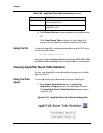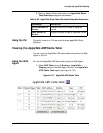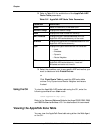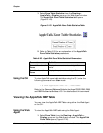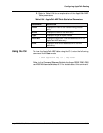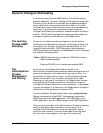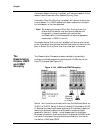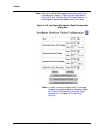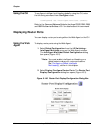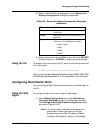
16-2 Avaya P550R, P580, P880, and P882 Multiservice Switch User Guide, v5.3.1
Chapter
All traffic that is sent to a particular multicast MAC address is said to
be in a multicast session. The switch supports 58 sessions per VLAN.
Each multicast session keeps track of which ports must receive that
session's multicast traffic within the VLAN. There are two types of
ports: client ports and router ports.
A client port is a port with an attached host configured to receive a
multicast session.
Router ports are ports that are attached to (or in the path to)
multicast routers and must be treated specially. All multicast traffic
on a VLAN must be forwarded to the router port.
Configuration of an Intelligent Multicast session first requires a
session to be established. Once that session is established, client and
router ports can be added to or removed from the session. Session
and port configuration can be done either manually or dynamically.
Dynamic intelligent multicasting is achieved through Internet
Group Management Protocol (IGMP) Snooping, and may also
involve Lucent Group Membership Protocol (LGMP), or Cisco
Group Management Protocol (CGMP) Snooping. All of the dynamic
mechanisms are based on the assumption that the client host is
running IGMP, and is requesting membership in the IP multicast
session.
* Note: If there is no multicast session created for a multicast
flow in a VLAN, then that multicast flow will be flooded
to all ports on the VLAN. This is the default behavior for
a bridge as described in IEEE 802.1D. Intelligent
multicasting must be enabled for any dynamic intelligent
multicasting to be active.
By default, the switch rate limits inter-router multicast traffic on all
modules that support rate limiting. If you need for your switch to
support heavy multicast traffic, disable rate limiting on ports that are
connected to routers. Also note that if high-bandwidth multicast
streams are being used, rate limiting will affect directly connected
clients if that stream is not part of an Intelligent Multicast session.
Manually Configured Intelligent Multicasting
Manual configuration of Intelligent Multicast sessions allows the
network administrator to dictate which multicast streams will be
intelligently multicasted. This method of configuration is also useful
where dynamic Intelligent Multicasting can not be used. Dynamic
Intelligent Multicasting can only be used in an environment that
uses IGMP and an IP multicast routing protocol (optional) to
distribute multicast streams.



